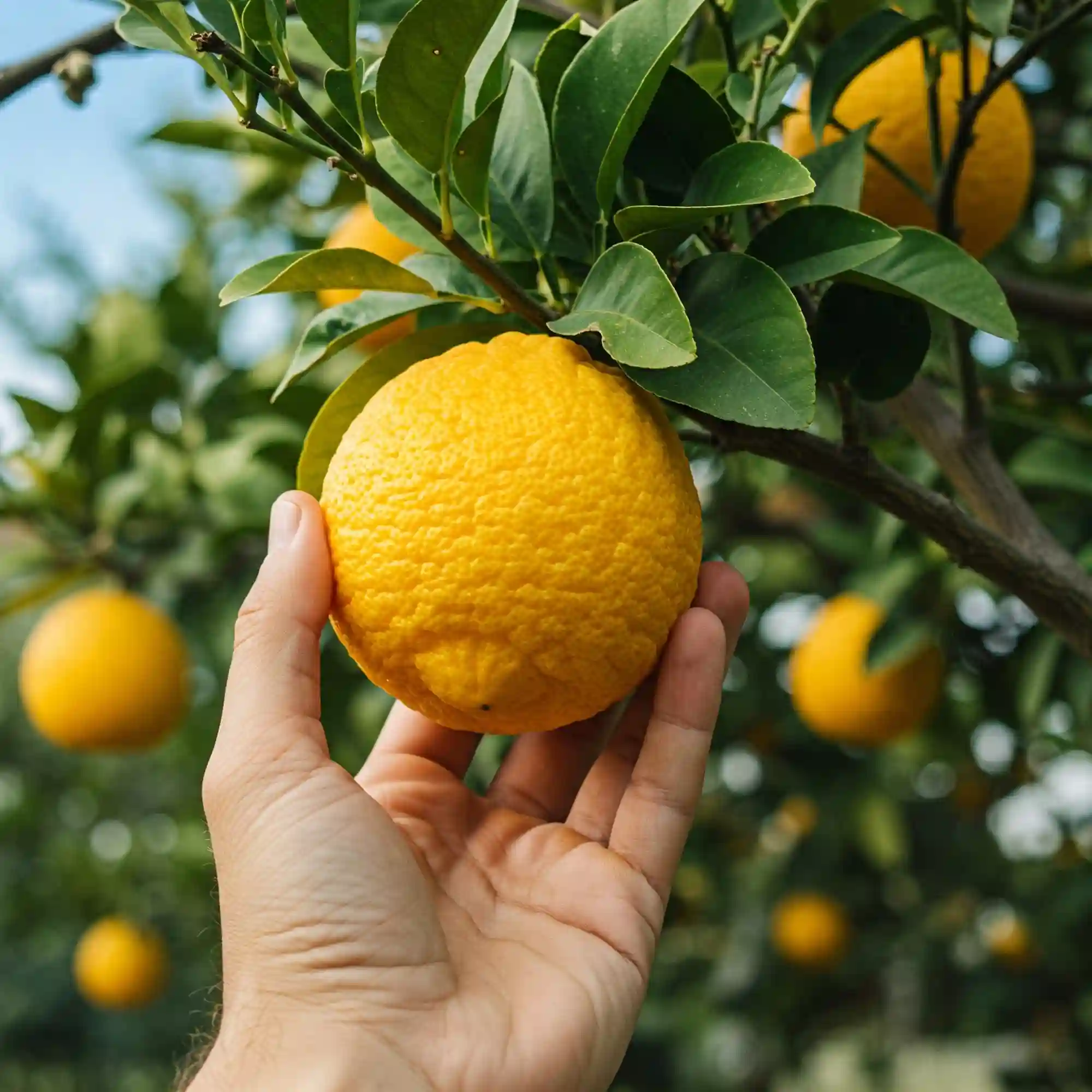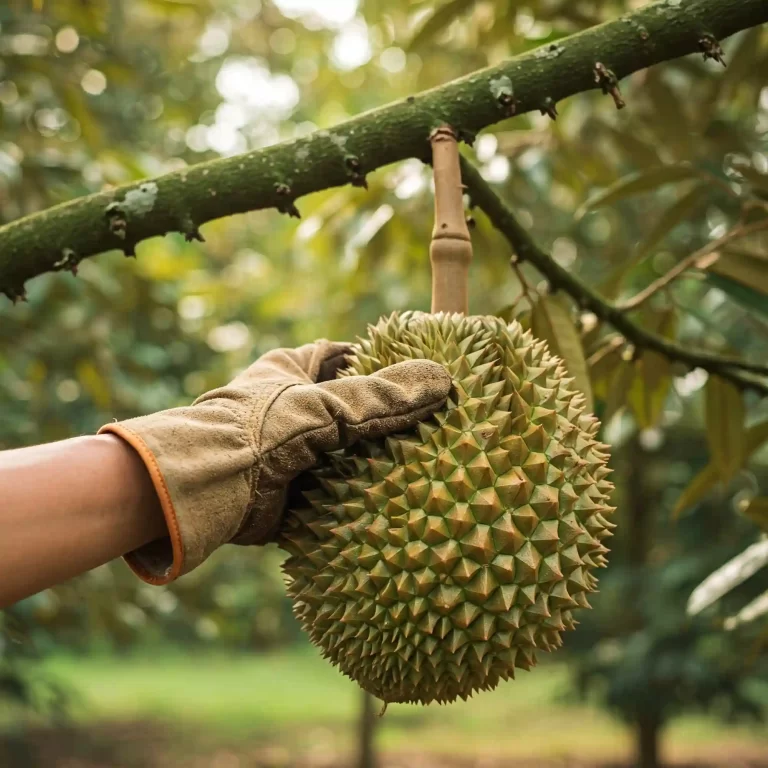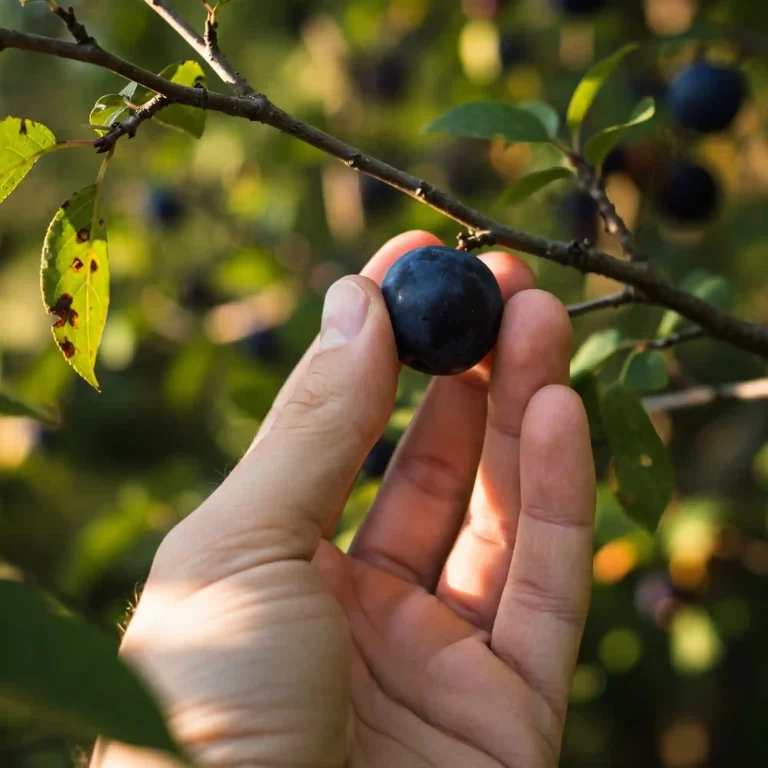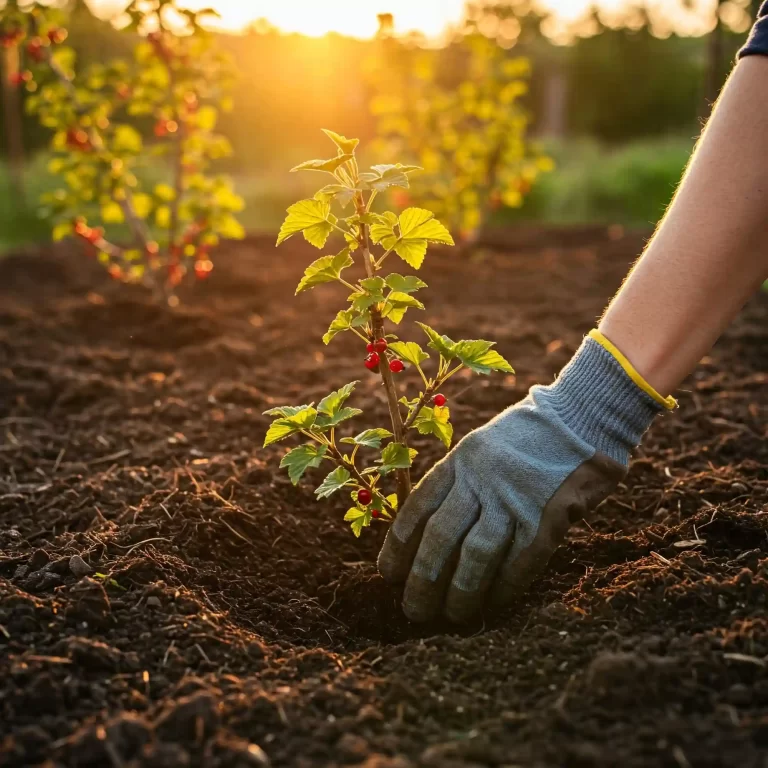Understanding Citron Fruit Varieties
Let’s delve into the fascinating world of citron fruit varieties! You might be surprised to learn that there’s more to citrons than just the typical yellow, bumpy fruit you might picture. In fact, these unique citrus fruits come in a variety of shapes, sizes, and flavors, each with its own distinct personality.
One of the most popular varieties is the Diamante Citron. As the name suggests, this citron is known for its large, pear-shaped fruits that can weigh up to several pounds. The Diamante has a thick, aromatic peel that is commonly used for candied citron, a popular ingredient in many traditional desserts.
Another notable variety is the Corsican Citron. This citron is highly prized for its intense aroma and is often used to make perfumes and essential oils. The Corsican Citron is smaller than the Diamante and has a more elongated shape.
If you’re looking for a citron with a sweeter flavor, you might consider the Fingered Citron. As the name suggests, this variety has a unique, finger-like appearance, making it visually appealing as well as delicious. The Fingered Citron is often used to make jams, marmalades, and other preserves.
Other popular citron varieties include the Etrog, a citron variety that holds significant religious significance in Judaism, and the Buddha’s Hand Citron, which is known for its unique, hand-like shape.
Understanding the specific characteristics of each citron variety is crucial for successful cultivation. Different varieties may have varying requirements for sunlight, water, and soil. By researching the specific needs of your chosen variety, you can provide the optimal growing conditions and ensure a healthy and productive tree.
For example, if you choose the Diamante Citron, which is known for its large fruit size, you’ll need to ensure that your tree receives ample sunlight and has access to sufficient nutrients to support the growth of these substantial fruits. On the other hand, if you opt for the Corsican Citron, you might need to provide more shade to protect the delicate aroma of its peel.
By taking the time to research and select the citron variety that best suits your climate, gardening style, and desired outcomes, you’re setting yourself up for success in your citron-growing journey.
Selecting the Perfect Planting Site
The choice of planting site significantly impacts the health and productivity of your citron tree. Citrons thrive in warm, sunny locations with well-drained soil. Ensure the chosen site receives at least six hours of direct sunlight daily. Avoid areas prone to waterlogging, as excessive moisture can harm the tree’s roots. If planting in containers, select a large pot with adequate drainage holes to accommodate the tree’s growth.
Sunlight: Citrons are sun-loving plants and require at least 6-8 hours of direct sunlight per day to thrive. Choose a location in your garden that receives plenty of sunlight, such as a south-facing slope or a sunny patio. Avoid planting your citron tree in shady areas, as this can lead to poor growth and reduced fruit production.
Soil: Well-drained soil is essential for citron trees. Avoid planting in heavy clay soils, which can retain too much moisture and lead to root rot. If your soil is heavy, you can improve drainage by adding organic matter such as compost or well-rotted manure. Ideally, the soil pH should be between 6.0 and 7.0.
Water Drainage: Poor drainage can be detrimental to citron trees. Ensure that the planting site does not accumulate water after heavy rains. If you notice any signs of waterlogging, you may need to improve drainage by creating raised beds or installing a drainage system.
Container Planting: If you plan to grow your citron tree in a container, choose a large pot with adequate drainage holes. The pot should be at least 18 inches in diameter and 18 inches deep to allow for sufficient root growth. Use a well-draining potting mix specifically formulated for citrus trees.
By carefully selecting the planting site and ensuring optimal growing conditions, you can provide your citron tree with the best possible start and increase its chances of thriving.
Preparing the Soil
Citron trees thrive in well-aerated, slightly acidic soil with a pH range of 6.0 to 7.0. Amending the soil with organic matter, such as compost or well-rotted manure, can improve drainage and nutrient content. If planting in containers, use a well-draining potting mix formulated for citrus trees. Avoid using heavy clay soil, as it can hinder root development and lead to waterlogging.
Soil Composition: The ideal soil for citron trees is a well-drained, loamy soil that is rich in organic matter. This type of soil provides good aeration and drainage, allowing excess water to drain away while retaining enough moisture for the tree’s roots.
Soil pH: Citron trees prefer slightly acidic soil with a pH range of 6.0 to 7.0. You can test your soil’s pH using a soil test kit, which is readily available at most garden centers. If your soil’s pH is too high, you can lower it by adding sulfur or aluminum sulfate. If your soil’s pH is too low, you can raise it by adding lime.
Amending the Soil: Adding organic matter to your soil can significantly improve its structure and fertility. Compost, well-rotted manure, and peat moss are excellent choices for amending soil for citron trees. Organic matter helps to improve drainage, aeration, and water retention, creating a more hospitable environment for the tree’s roots.
Container Planting: If you plan to grow your citron tree in a container, it’s crucial to use a well-draining potting mix. A good potting mix for citrus trees should contain a blend of peat moss, perlite, and compost. Avoid using garden soil in containers, as it can compact and hinder drainage.
Avoiding Heavy Clay Soil: Heavy clay soils can be problematic for citron trees. These soils tend to retain too much water, which can lead to root rot. If you have heavy clay soil, you can improve drainage by adding organic matter and creating raised beds.
By preparing the soil properly, you can create an optimal environment for your citron tree to thrive. Well-drained, nutrient-rich soil will promote healthy root growth, leading to a vigorous and productive tree.
Planting Citron Trees
The optimal time to plant citron trees is during the spring or fall when temperatures are mild. Dig a hole twice the width and depth of the root ball. Gently loosen the roots and place the tree in the hole, ensuring the graft union is slightly above ground level. Backfill the hole with the prepared soil, firming it gently around the roots. Water the tree thoroughly to settle the soil and provide adequate moisture.
Timing: The best time to plant citron trees is during the spring, after the last frost has passed, or in the fall, before the first frost arrives. Planting during these seasons allows the tree to establish itself before the stresses of summer heat or winter cold.
Hole Preparation: Dig a hole that is twice as wide and deep as the root ball of the citron tree. This will provide ample space for the roots to spread out and establish themselves.
Root Handling: Gently loosen the roots of the citron tree before planting. This will encourage root growth and help the tree to establish itself more quickly.
Planting Depth: When planting the citron tree, ensure that the graft union (the point where the rootstock and scion are joined) is slightly above ground level. This will prevent the graft union from rotting.
Backfilling and Watering: After placing the tree in the hole, backfill it with the prepared soil, firming it gently around the roots to eliminate any air pockets. Water the tree thoroughly after planting to settle the soil and provide adequate moisture.
By following these steps and paying attention to the specific needs of your citron tree, you can ensure a successful planting and set the stage for a healthy and productive tree.
Watering and Fertilizing
Consistent watering is crucial for the health of your citron tree, especially during dry periods. Water deeply and infrequently, allowing the top few inches of soil to dry out between waterings. Avoid overwatering, as it can lead to root rot. Fertilize your citron tree regularly during the growing season using a balanced fertilizer formulated for citrus trees. Follow the manufacturer’s instructions for application rates and frequency.
Watering: Citron trees require regular watering, especially during dry periods. However, it’s important to avoid overwatering, as this can lead to root rot. A good rule of thumb is to water deeply and infrequently, allowing the top few inches of soil to dry out between waterings. During the hottest months of the summer, you may need to water your citron tree more frequently.
Fertilizing: Citron trees are heavy feeders and benefit from regular fertilization. Use a balanced fertilizer formulated for citrus trees, such as a 6-6-6 or 8-8-8 formulation. Apply fertilizer in the spring before new growth begins and again in the fall after fruit harvest. You can also apply a slow-release fertilizer in the spring to provide a steady supply of nutrients throughout the growing season.
Frequency of Fertilization: The frequency of fertilization will depend on the age and size of your citron tree. Young trees may require fertilization every 4-6 weeks during the growing season, while mature trees may only need to be fertilized once or twice a year.
Additional Tips:
- Avoid fertilizing your citron tree during the winter months when it is dormant.
- Water the tree deeply after fertilizing to help the nutrients reach the roots.
- If you notice any signs of nutrient deficiencies, such as yellowing leaves or stunted growth, you may need to adjust your fertilization schedule or use a foliar spray to provide additional nutrients.
By following these guidelines, you can ensure that your citron tree receives the proper amount of water and nutrients to thrive. Proper watering and fertilization are essential for healthy growth, abundant fruit production, and overall tree health.
Pruning and Shaping
Pruning is essential to maintain the health and shape of your citron tree. Prune young trees to establish a strong central leader and remove any crossing or weak branches. Regular pruning also promotes air circulation and sunlight penetration, reducing the risk of disease. Prune during the dormant season to minimize stress on the tree.
Importance of Pruning: Pruning is an essential practice for citron trees. It helps to maintain the tree’s shape and size, promote healthy growth, and increase fruit production. By removing unwanted branches, you can improve air circulation and sunlight penetration, which can help to reduce the risk of disease.
Establishing a Strong Central Leader: When pruning young citron trees, it’s important to establish a strong central leader. The central leader is the main vertical branch of the tree. By selecting and training a strong central leader, you can create a well-structured and productive tree.
Removing Crossing or Weak Branches: Crossing branches can rub against each other, causing damage to the bark and increasing the risk of disease. Weak branches are often spindly and unproductive, and they can divert energy from the rest of the tree. Remove any crossing or weak branches to improve the overall health and vigor of your citron tree.
Timing of Pruning: The best time to prune citron trees is during the dormant season, typically in late winter or early spring before new growth begins. Pruning during this time minimizes stress on the tree and allows it to recover quickly.
Pruning Techniques: Use clean, sharp pruning shears to make clean cuts. Avoid making large cuts, as this can stress the tree. If you need to remove a large branch, make several smaller cuts to prevent bark tearing.
By following these pruning guidelines, you can maintain the health and productivity of your citron tree and ensure that it continues to thrive for years to come.
Harvesting and Using Citron Fruits
Citron fruits typically mature in late fall or early winter. The fruits are ready for harvest when they turn a deep yellow color and feel firm to the touch. Harvest carefully to avoid damaging the fruit. Citron fruits are primarily used for their thick, aromatic peels, which are often candied or used to make preserves. The flesh, while edible, is typically quite tart and often used for medicinal purposes.
Harvesting: Citron fruits are typically ready for harvest in late fall or early winter. You can tell a citron is ripe when it turns a deep yellow color and feels firm to the touch. Avoid harvesting fruits that are still green or soft, as they may not be fully ripe.
Harvesting Techniques: When harvesting citron fruits, it’s important to be gentle to avoid damaging the fruit. Use a pair of sharp pruning shears to cut the fruit from the tree, leaving a short stem attached.
Uses of Citron Fruits: Citron fruits are primarily valued for their thick, aromatic peels. The flesh, while edible, is typically quite tart and often used for medicinal purposes. Here are some common uses for citron fruits:
- Candied Citron: Candied citron peel is a popular ingredient in many desserts, including cakes, cookies, and fruitcakes.
- Preserves: Citron peel can also be used to make jams, marmalades, and other preserves.
- Medicinal Uses: Citron peel has been used in traditional medicine for centuries. It is believed to have anti-inflammatory and digestive properties.
- Aromatic Uses: The essential oil extracted from citron peel is used in perfumes and other fragrances.
Additional Tips:
- Citron fruits can be stored at room temperature for several weeks.
- To store citron fruits for longer periods, you can refrigerate them.
- If you plan to use the citron peel, it is best to harvest the fruit when it is fully ripe and the peel is thick and aromatic.
By following these guidelines, you can harvest and enjoy the fruits of your labor. Citron fruits offer a unique flavor and aroma that can add a special touch to your culinary creations.
Frequently Asked Questions
Q: How long does it take for a citron tree to bear fruit?
A: Citron trees typically begin to bear fruit 3 to 5 years after planting. However, the exact timeframe can vary depending on the variety of citron, the growing conditions, and the overall health of the tree.
Q: Can citron trees be grown in containers?
A: Yes, citron trees can be successfully grown in large containers, provided they receive adequate sunlight and regular fertilization. Container-grown citron trees may require more frequent watering and fertilization than those planted in the ground.
Q: Are citron trees self-pollinating?
A: Yes, citron trees are self-pollinating, meaning they can produce fruit without the need for another citron tree nearby. However, having multiple citron trees can increase fruit production due to cross-pollination.
Q: What are the benefits of growing citron fruits?
A: Citron fruits offer several benefits, including:
- Culinary Uses: Citron peel is used in various culinary applications, such as candied citron, jams, marmalades, and preserves.
- Medicinal Properties: Citron peel has been traditionally used for its potential health benefits, including anti-inflammatory and digestive properties.
- Aromatic Qualities: Citron peel is highly aromatic and is used in perfumes and other fragrances.
- Ornamental Value: Citron trees can add beauty and interest to your garden with their lush foliage and unique fruit.
Q: What are some common problems faced by citron tree growers?
A: Some common problems faced by citron tree growers include:
- Pests: Common pests that can affect citron trees include aphids, scale insects, and citrus psyllids.
- Diseases: Citrus canker, citrus scab, and gummosis are some of the diseases that can affect citron trees.
- Nutrient Deficiencies: Nutrient deficiencies can cause various problems, such as yellowing leaves and stunted growth.
- Environmental Stress: Extreme weather conditions, such as drought or frost, can also stress citron trees.
By being aware of these potential problems and taking steps to prevent or address them, you can ensure the health and productivity of your citron trees.
Conclusion
Remember, patience and consistent care are key to successfully growing citron fruits. By following these guidelines and observing your tree’s specific needs, you’ll be well on your way to enjoying the rewards of homegrown citron fruits. Happy gardening!




